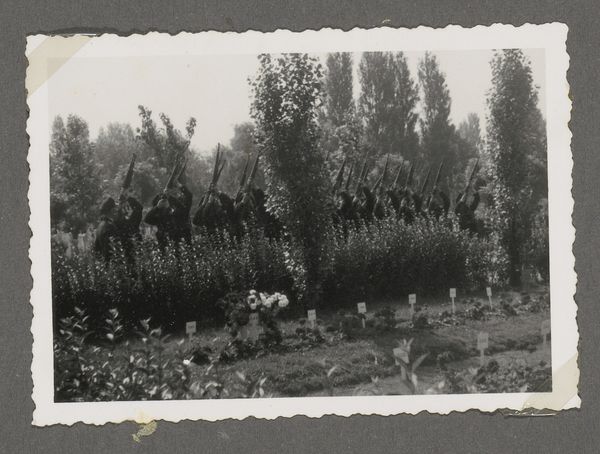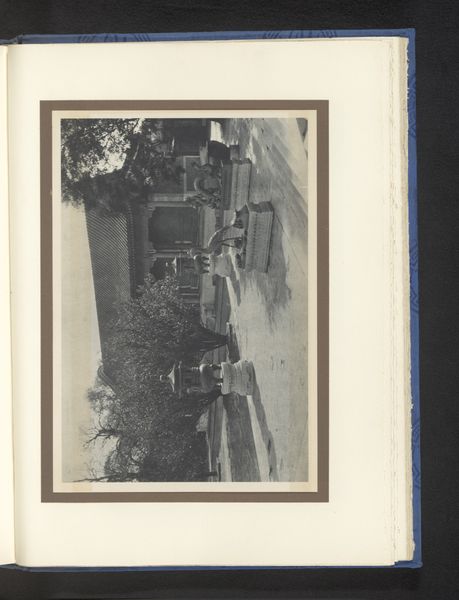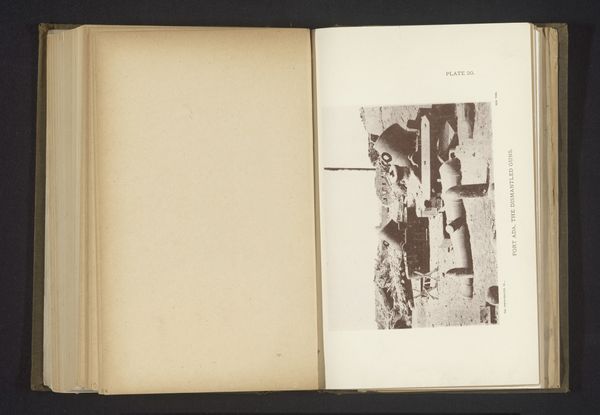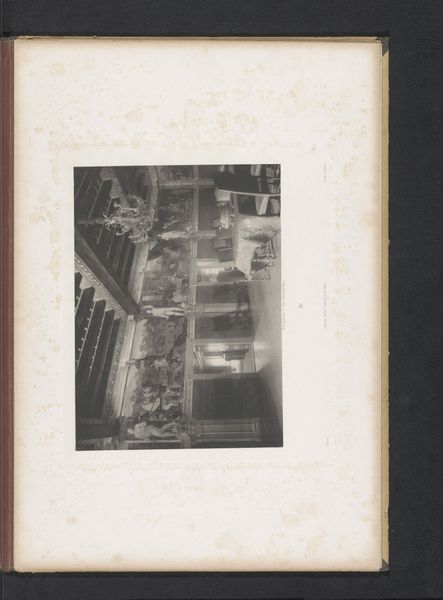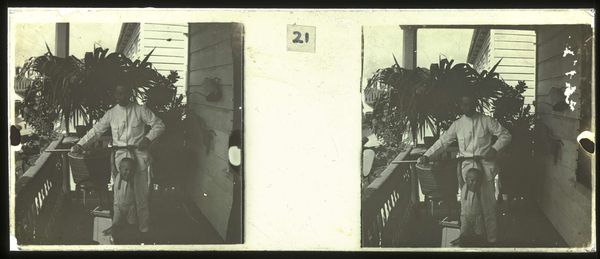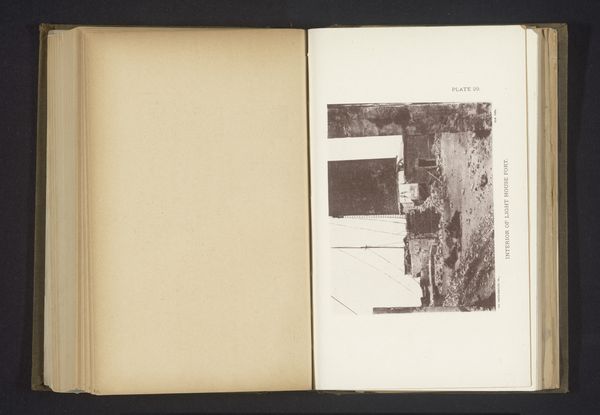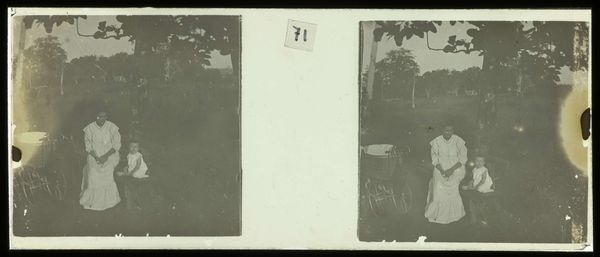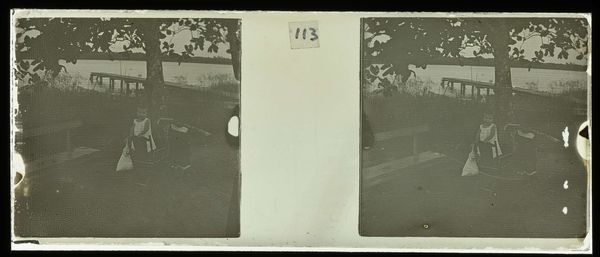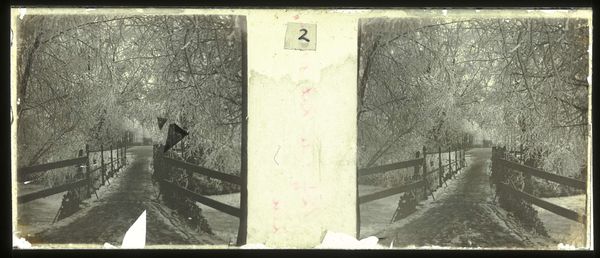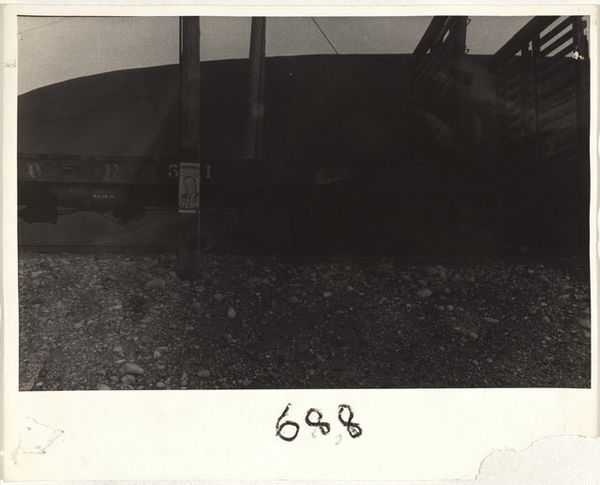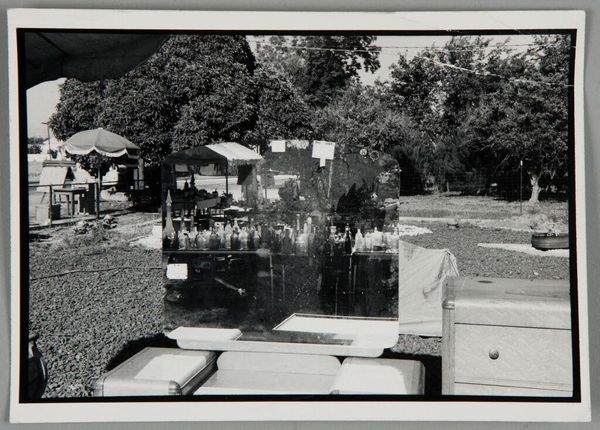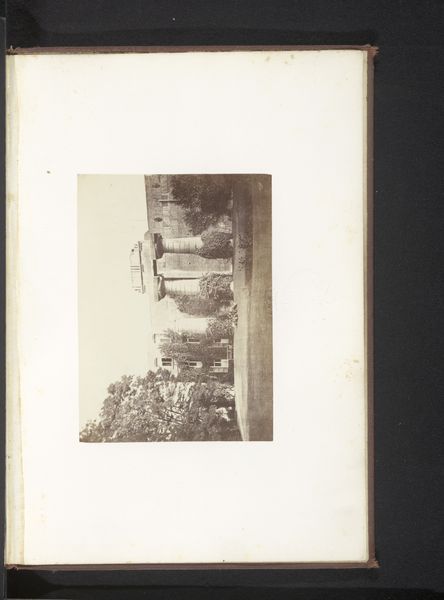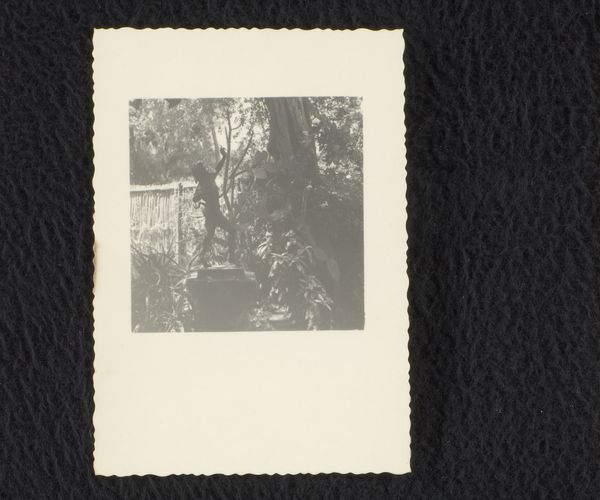
Begrafenis van drie gevallen soldaten met hakenkruisvlaggen over de kisten 1941 - 1945
0:00
0:00
anonymous
Rijksmuseum
#
photo of handprinted image
#
aged paper
#
pale palette
#
reduced colour palette
#
ink paper printed
#
light coloured
#
white palette
#
personal sketchbook
#
sketchbook drawing
#
sketchbook art
Dimensions: height 62 mm, width 87 mm
Copyright: Rijks Museum: Open Domain
Curator: Here we have a photograph from the collection of the Rijksmuseum, entitled "Begrafenis van drie gevallen soldaten met hakenkruisvlaggen over de kisten," which translates to "Burial of three fallen soldiers with swastika flags over the coffins," dating from 1941 to 1945. Editor: Right, the pallid tones strike me first; it gives the whole scene a ghostly pallor, like a memory fading, even though the image itself seems quite crisp. Curator: Indeed. The stark contrast heightens the somber mood and, more importantly, points us toward the devastating socio-political implications embedded within this visual record. Think of the context. Think of whose gaze is privileged in this representation of death. Editor: The framing almost seems like a deliberate act of...obstruction? Like, we're witnessing the edges of something forbidden, partially hidden, a truth that wants to stay buried along with the soldiers. There's an undeniable eeriness about it all. Curator: That sense of "obstruction," I would argue, serves as a critical entry point. Who are these men observing the burial, and what ideological function do their salutes serve in normalizing and perpetuating state violence? Are they active participants or are they reluctant spectators, victims of historical tragedy? Editor: So, even in its simplicity, this photo seems to be screaming about power and the performance of allegiance. I mean, look at those swastika flags draped so prominently. It is not about honoring individuals, it's a twisted spectacle of devotion to an ideology. Curator: Precisely. What this image reveals is the normalization of Nazi propaganda during wartime. Through a careful assessment of such primary-source documentation, we have an opportunity to deconstruct the insidious ways propaganda shaped societal perceptions during the rise of fascism. Editor: It's chilling to see such quiet acceptance. Like a ritual drained of all human feeling. Still, maybe the fading colors, the stark lines, offer a glimpse of resistance too—a quiet refusal to be fully absorbed by the spectacle. Curator: Your idea adds a layer of complexity that demands closer consideration of agency within constrained conditions. This image compels us to examine our assumptions. It invites us to deconstruct how even acts of apparent devotion can serve as battlegrounds for the soul. Editor: Absolutely. This photo feels like more than just an artifact; it’s a heavy question mark etched into history. Thanks for digging so deep. Curator: And thank you for providing the illuminating creative interpretation.
Comments
No comments
Be the first to comment and join the conversation on the ultimate creative platform.

